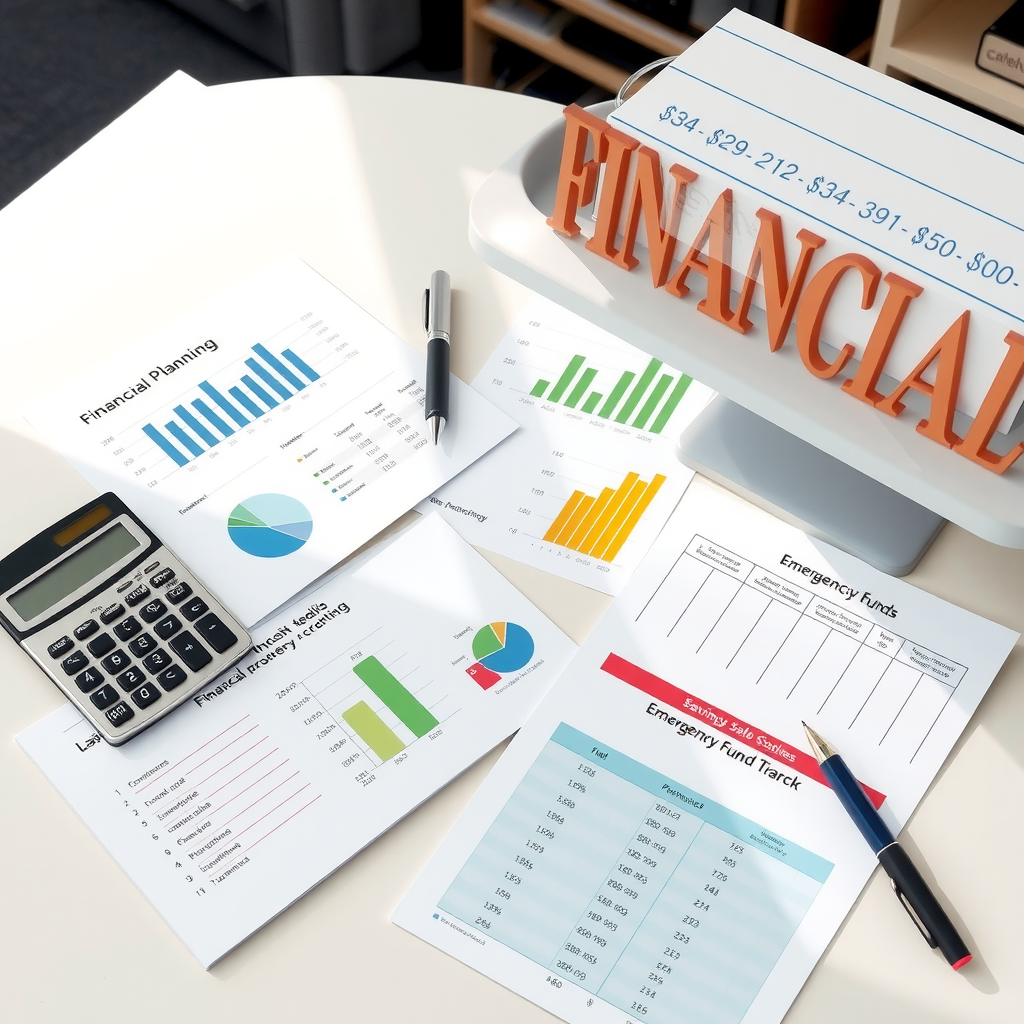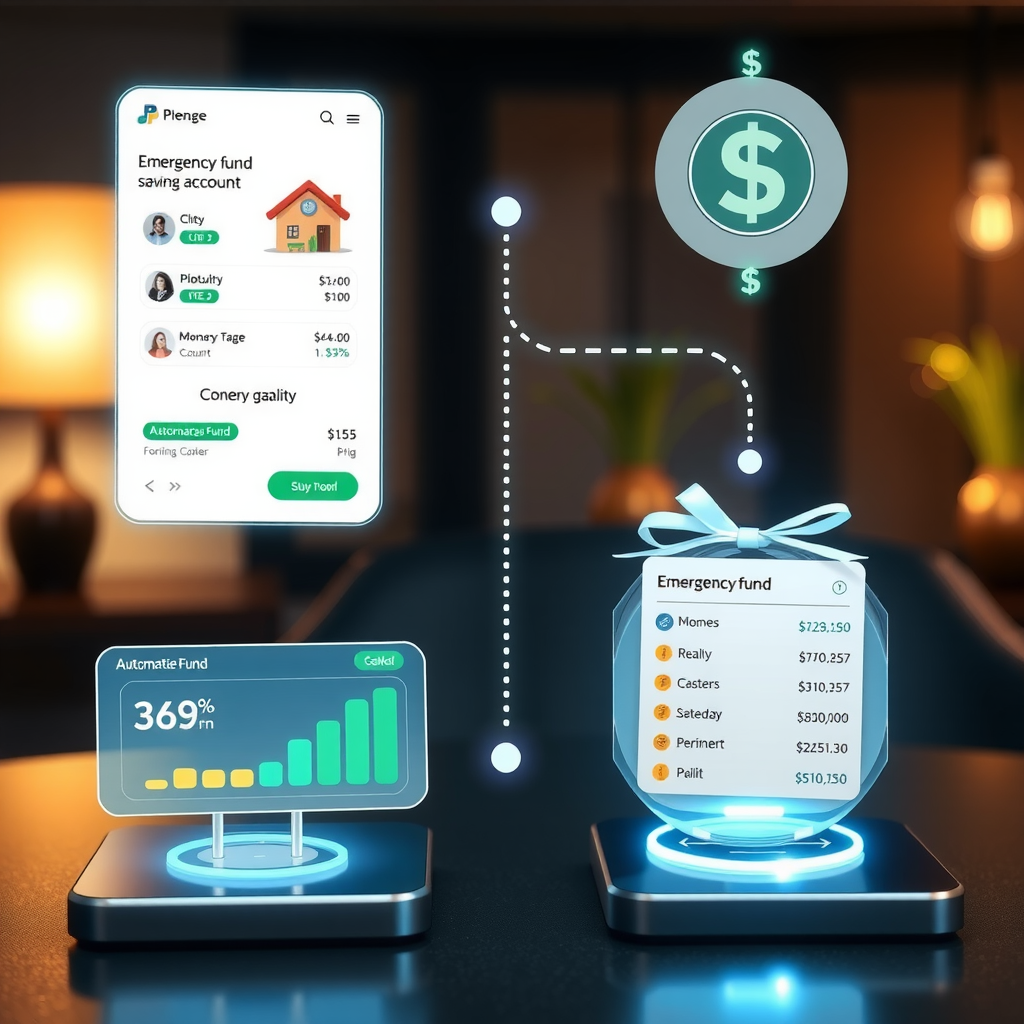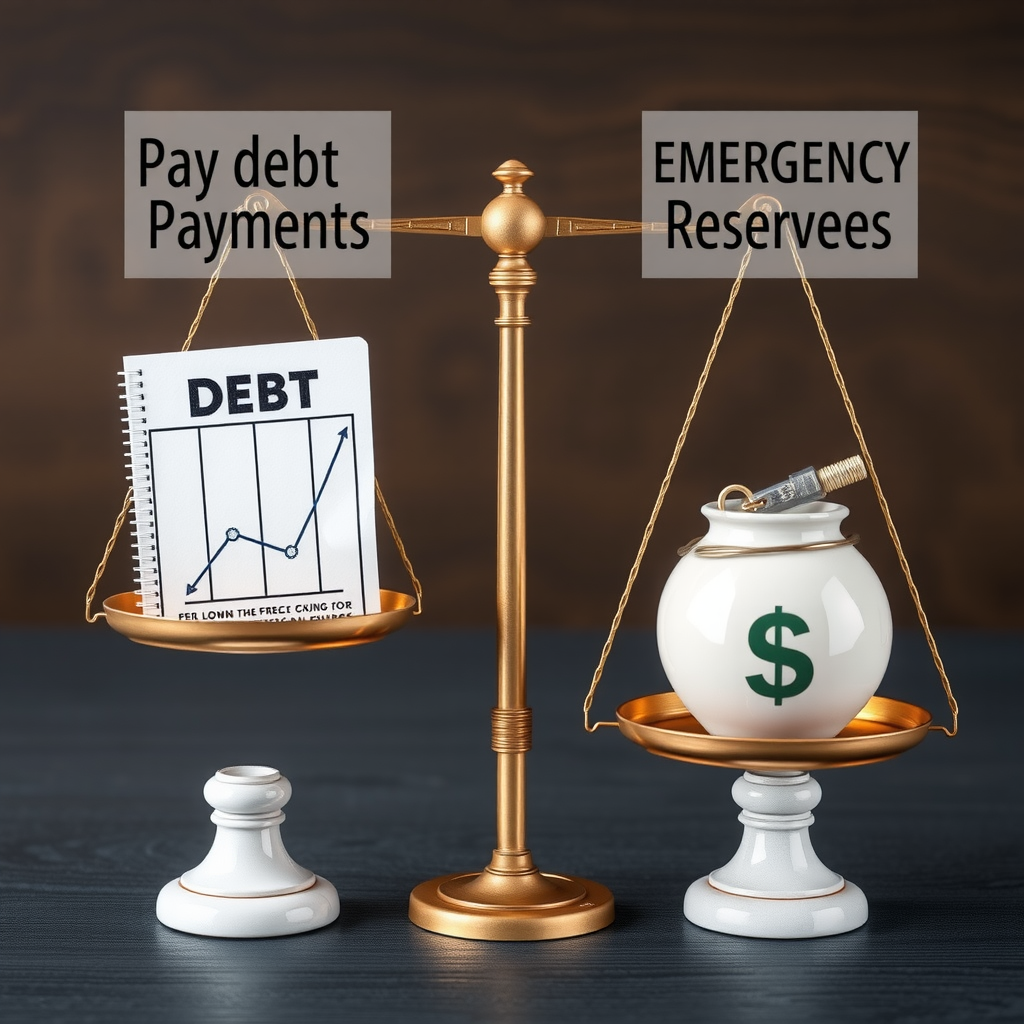Published on October 08, 2024
Building Financial Safety Nets: A Comprehensive Guide to Emergency Reserves
A practical exploration of establishing protective financial cushions to prevent future crises and ensure long-term resilience

Financial emergencies don't announce themselves in advance. Whether it's unexpected medical expenses, sudden job loss, or urgent home repairs, life has a way of testing our financial preparedness when we least expect it. The difference between weathering these storms and falling into financial crisis often comes down to one critical factor: having an adequate emergency fund in place.
Building a financial safety net isn't just about saving money—it's about creating a systematic approach to financial stability that protects you from the unpredictable nature of life. This comprehensive guide will walk you through the essential frameworks, strategies, and habits needed to establish and maintain protective financial cushions that can prevent future crises and restore your financial confidence.
Understanding the Foundation: Why Emergency Reserves Matter
Before diving into the mechanics of building an emergency fund, it's crucial to understand why these reserves are fundamental to financial stability. An emergency fund serves as your first line of defense against financial shocks, preventing you from resorting to high-interest debt, depleting retirement accounts, or making desperate financial decisions that can have long-lasting consequences.
Research consistently shows that households with adequate emergency savings experience significantly less financial stress and are better positioned to recover from economic setbacks. These reserves provide not just financial security, but psychological peace of mind—knowing that you have a buffer against uncertainty allows you to make better long-term financial decisions and take calculated risks in your career and investments.
"The goal isn't just to save money—it's to create a financial buffer that gives you options when life throws unexpected challenges your way. Financial stability begins with the confidence that comes from knowing you're prepared."
— Financial Planning Principle

Calculating Your Appropriate Reserve Level
One of the most common questions about emergency funds is: "How much should I save?" While the traditional advice suggests three to six months of expenses, the reality is more nuanced. Your ideal reserve level depends on several personal factors that require careful consideration and honest assessment of your unique situation.
Factors That Determine Your Target Amount
Your employment stability plays a crucial role in determining your reserve needs. If you work in a volatile industry or have irregular income as a freelancer or business owner, you'll need a larger cushion—potentially six to twelve months of expenses. Conversely, those with stable government jobs or tenured positions might be comfortable with three to four months of reserves.
Family circumstances significantly impact your emergency fund requirements. Single individuals with no dependents can typically maintain smaller reserves, while families with children, elderly dependents, or members with chronic health conditions need more substantial safety nets. Consider not just your regular monthly expenses, but also the potential costs of family emergencies that might require your immediate attention and financial resources.
Your existing insurance coverage and access to credit also factor into the equation. Comprehensive health insurance, disability coverage, and adequate homeowner's or renter's insurance can reduce the amount you need in liquid reserves. However, don't make the mistake of relying too heavily on credit cards or lines of credit as emergency funds—these should be backup options, not primary safety nets.
The Calculation Framework
Start by calculating your essential monthly expenses—not your total spending, but the bare minimum you'd need to maintain basic living standards during a crisis. This includes housing costs, utilities, food, transportation, insurance premiums, minimum debt payments, and essential healthcare expenses. Multiply this figure by the number of months appropriate for your situation to arrive at your target emergency fund amount.
For example, if your essential monthly expenses total $3,500 and you determine that six months of reserves is appropriate for your circumstances, your target emergency fund would be $21,000. This might seem daunting, but remember that building this reserve is a gradual process—what matters most is starting and maintaining consistent progress toward your goal.

Implementing Automated Reserve-Building Systems
The most effective way to build emergency reserves is through automation—removing the decision-making process from each paycheck and making savings a non-negotiable part of your financial routine. Automation transforms saving from an act of willpower into a systematic process that happens regardless of your daily financial decisions or temporary spending temptations.
Setting Up Your Automatic Transfer System
Begin by opening a separate savings account specifically designated for your emergency fund. This account should be at a different bank from your primary checking account—creating this separation adds a psychological barrier that makes you less likely to dip into reserves for non-emergencies. Look for high-yield savings accounts that offer competitive interest rates while maintaining FDIC insurance protection and easy access when truly needed.
Schedule automatic transfers to occur immediately after each paycheck deposits into your checking account. This "pay yourself first" approach ensures that savings happen before you have the opportunity to spend the money elsewhere. Start with whatever amount feels manageable—even $50 or $100 per paycheck—and gradually increase this amount as you adjust to living on the remaining income.
Many employers offer direct deposit splitting, allowing you to automatically route a portion of your paycheck directly to your emergency fund savings account. This method is even more effective than scheduled transfers because the funds never touches your checking account, making it truly invisible to your day-to-day spending decisions.
Accelerating Your Savings Through Strategic Deposits
Beyond regular automated transfers, implement a system for capturing windfalls and unexpected income. Commit to depositing at least 50% of tax refunds, work bonuses, gift funds, or side income directly into your emergency fund. These irregular deposits can significantly accelerate your progress toward your target reserve level without impacting your regular monthly budget.
Consider implementing a "found money" rule where any funds saved through cancelled subscriptions, negotiated bill reductions, or spending cuts gets immediately transferred to your emergency fund. This creates a positive feedback loop where your efforts to reduce expenses directly strengthen your financial safety net, reinforcing good financial habits while building reserves.
Balancing Emergency Savings with Debt Obligations
One of the most challenging aspects of building financial stability is determining how to prioritize emergency fund contributions alongside debt repayment obligations. This balance is crucial—neglecting either component can undermine your overall financial health and leave you vulnerable to future crises.

The Starter Emergency Fund Approach
If you're carrying high-interest debt, particularly credit card balances with interest rates above 15%, consider adopting a two-phase approach. First, build a starter emergency fund of $1,000 to $2,000—enough to handle minor emergencies without derailing your debt repayment plan. This modest cushion prevents you from accumulating additional debt when unexpected expenses arise during your debt payoff journey.
Once you've established this starter fund, shift your focus to aggressively paying down high-interest debt while maintaining minimum payments on all other obligations. The mathematical reality is that paying 18% interest on credit card debt costs you more than you'll earn in a savings account, making debt elimination a priority once you have basic emergency coverage in place.
The Parallel Approach for Moderate Debt
For those with moderate-interest debt like student loans or auto loans (typically 4-8% interest rates), a parallel approach often makes more sense. Allocate your available savings between debt repayment and emergency fund building, perhaps splitting 60-40 or 70-30 depending on your debt interest rates and risk tolerance. This strategy provides the psychological benefit of progress on both fronts while building financial stability more holistically.
The key is finding a sustainable balance that doesn't leave you vulnerable to emergencies while still making meaningful progress on debt reduction. Remember that using credit cards to cover emergencies while aggressively paying down debt defeats the purpose—you're essentially moving debt around rather than improving your financial position. Your emergency fund exists precisely to prevent this cycle.
Adjusting Your Strategy Over Time
Your debt-to-savings allocation shouldn't remain static. As you pay down high-interest debt, gradually shift more resources toward building your full emergency fund. Once you've eliminated high-interest debt and established a solid emergency reserve, you can focus on other financial goals like retirement savings, investment accounts, or paying off lower-interest debt ahead of schedule. This phased approach ensures you're always making progress on your most pressing financial priorities while building comprehensive stability.
Maintaining Liquidity During Uncertain Times
Having funds saved is only half the equation—maintaining appropriate liquidity ensures you can access your reserves quickly when emergencies strike. The balance between earning returns on your savings and maintaining accessibility requires careful consideration of where and how you store your emergency funds.
Optimal Account Structures for Emergency Funds
High-yield savings accounts represent the sweet spot for most emergency funds, offering FDIC insurance protection, competitive interest rates, and same-day or next-day access to your funds. While the interest earned won't make you wealthy, it helps your reserves keep pace with inflation and provides some return on funds that would otherwise sit idle in a checking account.
funds market accounts offer another viable option, often providing slightly higher interest rates than traditional savings accounts while maintaining similar liquidity. Some money market accounts come with limited check-writing privileges, which can be useful for larger emergency expenses, though you should resist the temptation to use these features for non-emergencies.
Avoid the temptation to allocate your emergency fund in stocks, bonds, or other securities that can lose value or require time to liquidate. The purpose of emergency reserves is preservation and accessibility, not growth. Market volatility means your emergency fund could be worth significantly less precisely when you need it most—during economic downturns when job losses and financial stress are most common.

Tiered Liquidity Strategy
Consider implementing a tiered approach to emergency fund storage once you've built substantial reserves. Keep one to two months of expenses in a highly liquid savings account for immediate access. Store the remaining reserves in slightly less accessible but higher-yielding options like certificates of deposit (CDs) with staggered maturity dates or Treasury securities.
This CD ladder strategy involves purchasing multiple CDs with different maturity dates—perhaps one maturing every three months. If you need the funds before maturity, you'll pay an early withdrawal penalty, but this penalty is typically modest compared to the higher interest rates CDs offer. Meanwhile, if you don't need the funds, they're earning better returns than a standard savings account while still remaining relatively accessible.
Maintaining Access During Crises
Ensure you have multiple ways to access your emergency funds, including online transfers, mobile banking apps, ATM cards, and phone banking. During genuine emergencies, you don't want to discover that your only access method is unavailable due to technical issues, natural disasters, or other complications. Test your access methods periodically to confirm they work and that you remember necessary passwords and security information.
Creating Sustainable Habits for Long-Term Financial Resilience
Building an emergency fund is not a one-time project but rather the foundation of ongoing financial habits that support long-term stability and resilience. The practices you develop while establishing your initial reserves will serve you throughout your financial life, helping you weather future challenges and maintain the financial confidence that comes from being prepared.
The Replenishment Mindset
When you do need to tap your emergency fund—and eventually you will—immediately create a plan to replenish it. Treat rebuilding your reserves with the same urgency you gave to establishing them initially. This might mean temporarily reducing discretionary spending, taking on a short-term side project, or redirecting money from other savings goals until your emergency fund returns to its target level.
The psychological impact of depleting your emergency fund can be significant, potentially creating anxiety about future financial security. Combat this by viewing fund usage as the system working exactly as designed—you had an emergency, you used your emergency fund, and now you're rebuilding it. This is financial stability in action, not financial failure.
Regular Review and Adjustment
Schedule annual reviews of your emergency fund target amount, adjusting for changes in your expenses, family situation, employment stability, and overall financial circumstances. What was adequate when you were single and renting might be insufficient after marriage, children, or home purchase. Similarly, as your income grows and your financial situation stabilizes, you might determine that a larger reserve provides appropriate peace of mind.
These reviews also provide an opportunity to assess whether your current savings rate remains appropriate. As you receive raises or pay off debts, consider increasing your automatic savings contributions to accelerate progress toward other financial goals while maintaining your emergency fund at its target level.
Building Beyond the Basics
Once you've established a solid emergency fund, consider building additional financial cushions for specific purposes. A car replacement fund, home maintenance reserve, or medical expense account can prevent you from depleting your general emergency fund for predictable but irregular expenses. These targeted savings accounts represent the next level of financial sophistication, moving beyond crisis prevention to comprehensive financial planning.
This layered approach to financial reserves creates multiple buffers against different types of financial challenges, reducing stress and providing flexibility in how you respond to various situations. The confidence that comes from knowing you're prepared for multiple scenarios—not just worst-case emergencies—represents true financial resilience and stability.
"Financial stability isn't about having unlimited resources—it's about having sufficient resources to handle life's inevitable challenges without derailing your long-term goals. Your emergency fund is the foundation upon which all other financial progress is built."
Moving Forward with Confidence
Building an emergency fund represents one of the most important steps you can take toward financial stability and long-term prosperity. While the process requires discipline, patience, and sometimes sacrifice, the peace of mind and financial security it provides are invaluable. Every dollar you save brings you closer to the confidence that comes from knowing you're prepared for whatever challenges life might present.
Remember that progress, not perfection, is the goal. Whether you're starting with $25 per paycheck or $500, what matters is establishing the habit and maintaining consistency. Your emergency fund will grow over time, and with it, your financial resilience and ability to weather future storms without compromising your long-term financial goals.
The strategies outlined in this guide—calculating appropriate reserve levels, implementing automated savings systems, balancing debt obligations, maintaining liquidity, and creating sustainable habits—provide a comprehensive framework for building and maintaining financial safety nets. Adapt these principles to your unique circumstances, remain committed to your savings goals, and trust that your efforts today are creating the financial stability and security you deserve for tomorrow.
Financial crises are inevitable, but financial catastrophe is optional. With adequate emergency reserves in place, you transform potential disasters into manageable challenges, maintaining control over your financial destiny regardless of what unexpected events may arise. Start building your financial safety net today, and take the first step toward lasting financial confidence and resilience.